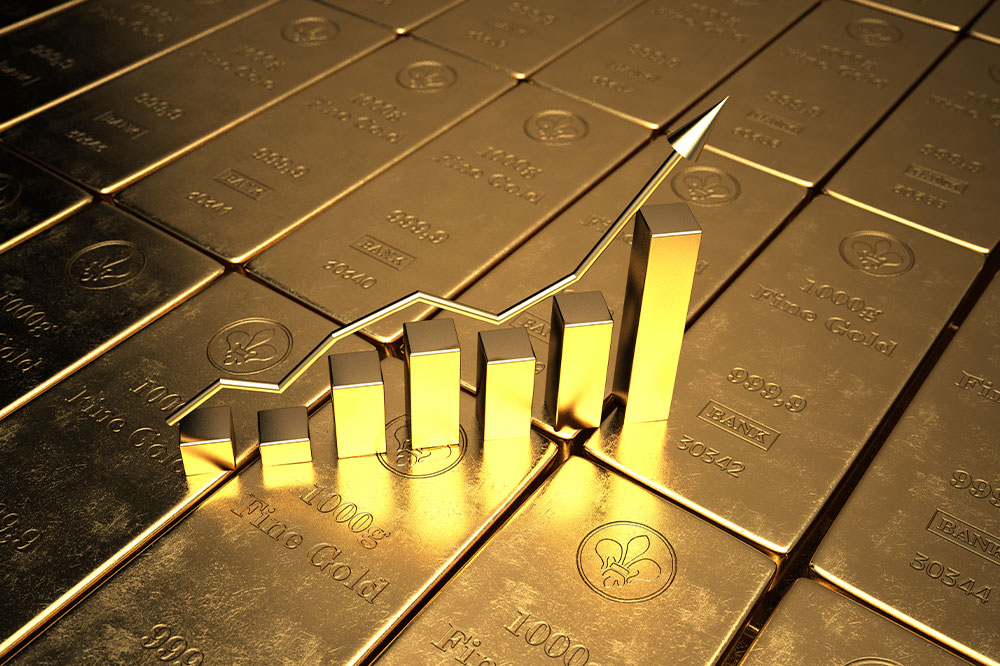A Brief Insight into Gold Rates
Gold is a precious metal that is also seen as a safe investment. For those who seek to invest in gold, gold rates are an important factor to keep track of. It changes each day and is also set twice daily. This helps establish the standard gold price worldwide.
Gold as a precious metal, money, and investment
Gold has a long history; it is entrenched in various cultures across the world as a precious metal that has also been used as currency.

The gold currency was in use long before paper currency and gold still retain its relative liquidity. You can still quickly convert it into cash, whatever form it is in – bars, coins, even jewelry. Historically, gold has always retained its value and never become worthless. Which is why it is seen as a safe haven investment.
How are gold rates fixed?
Daily gold prices can move up and down each minute and the prices vary across different regions of the world. However, the standard price is fixed based on the gold rates. This gold rate is set in a process called the London Gold Fix, a practice established in 1919.
The London Gold Fix
In 1919, the Bank of England set up a deal by which they would sell gold from South African mines through NM Rothschild in London. The price would be decided by the major London brokers. Until 2004, Rothschild remained the chair of the London Gold Fix. After their exit, the chairmanship now rotates among the five members.
The London Bullion Market Association (LBMA) determines the gold rates worldwide. These gold rates are set twice a day. The five participating members who are from the five largest bullion banks in London begin the process with the Chairman setting a price. This would be near the spot price for gold at that time.
The members have limit orders on their hands from customers to buy or sell gold at the fixed price. Once the process begins, the members aggregate their orders for buying or selling. They will each then declare to the chair the net quantity of gold they are ready to buy or sell at the declared price.
However, the number of buy orders and the number of sell orders might not be in balance, affecting supply and demand. The chairman would check to see which dominates—the number of buy orders or the number of sell orders.
The chairman will raise the price if there are too many buyers. This may exceed a few of the purchase order limits, causing some of the buy orders to drop out, decreasing the demand.
It could also drive the price above some of the sale order limits, inviting more sale orders to enter the pool, raising the supply.
If the number of sell orders is more, the chairman could lower the price. This will push the price below some of the sale order limits, and those orders will exit.
This process will be repeated until the buy and sell orders balance out within a limit of 50 bars which translates to 20,000 troy ounces of gold. At this point, the price is fixed and is declared as the current gold rate.
The London Gold Fix process is conducted twice a day, 10:30 AM and 3:00 PM (GMT). These are generally referred to as the Morning Fix and the Evening Fix respectively. The prices are quoted in US Dollars, British Pounds, and Euros. The prices go live immediately though Gold Price Charts and Teletext services. They are also published in newspapers.
The London Gold Fix serves as a benchmark for gold price and serves as the reference price for gold trading and for various commercial gold products. The three main customers for large volumes of gold are banks and bullion traders who buy in large quantities, industries, and large-scale jewelry producers.
Gold rates
The London Gold Fix sets the benchmark, but the prices of precious metals are driven up or down by the actual trading that takes place every minute through different methods.
Spot price
The gold spot price is the current price at which gold is bought or sold immediately.
Bullion traders and large banks buy and sell large volumes of gold for their customers. As they trade in huge volumes, they serve as a good source for determining the spot price of Gold
OTC or over-the-counter markets are decentralized markets where buyers and sellers trade in gold using telecommunication tools, phone or fax, or through electronic networks.
Futures price
Futures contracts are negotiated through major precious metal exchanges. A futures contract is an instrument through which two parties agree to buy or sell gold at a specific price at a future date. The futures price is generally higher than the spot price for gold. The major precious metal exchanges are located in New York, Tokyo, Shanghai, Mumbai, Dubai, and Istanbul.
Gold can be bought and sold in many forms like bars, coins, jewelry, gold certificates, investments in ETFs, and other exchange-traded products, and gold accounts. However, gold in physical form is still seen as the best way of investment. As a safe haven investment, gold has retained its popularity over millennia and still retains its appeal.